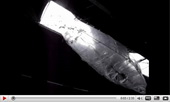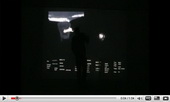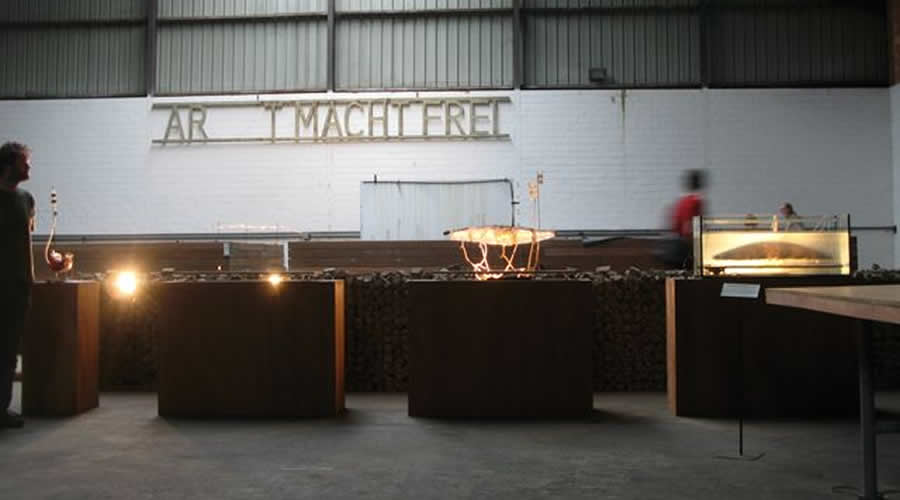 |
||||||||||
Hydrostatic models Verbeke Foundation |
||||||||||
 |
||||||||||
Youtube |
||||||||||
Foam model 1/50th. Hull shape in polyurethane foam. Rigid model constructed from sections. Length: 170 cm Weight: +- 5kg |
||||||||||
The rigid models show a sleek, geometric shape. The ship however is not conceived as a rigid envelope. The gasbags are not pressurized. These bags can deform and their volume can change. The overall shape is built up from a number of separate volumes, which can move with respect to each other. As a consequence of this, the ship can bend in order to steer the ship and the hull can ‘shape shift’ to change its aerodynamic properties. |
||||||||||
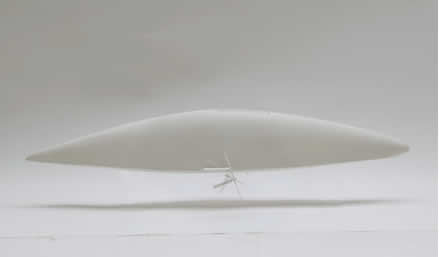 |
||||||||||
 |
||||||||||
Plaster cast model 1/100.
|
||||||||||
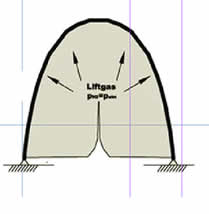 |
||||||||||
The shape is not generated by pressure, but by the weight of the water contained inside. The volume of the sack is variable and the shape morphs as more water is added or some is removed. If this bag was to be inverted and filled with a gas lighter than air, instead of water, you would get the mirror effect of this simulation.
|
||||||||||
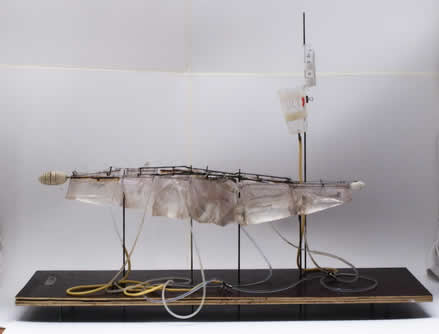 |
||||||||||
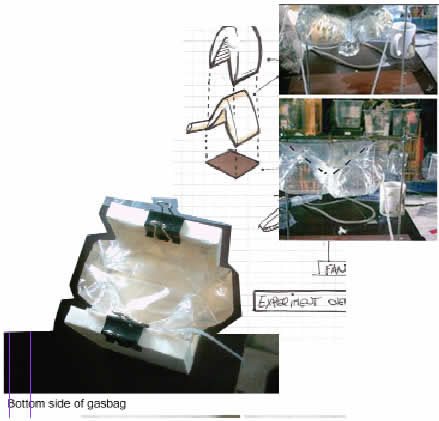 |
||||||||||
Hydrostatic model 1/100thThis model was built as a simulation tool for testing possible shapes when combining a number of inflatable gas bags. With gas inlet tubes, the different volumes can be filled to varying degrees. The load-bearing structure can be manipulated by hand.
|
||||||||||
The hydrostatic models are not a realistic visual representation of the ship, but aim to simulate how the ship would move. By filling the model gasbags with alcohol and placing the model inside a water tank, the simulations can be built upright. |
||||||||||
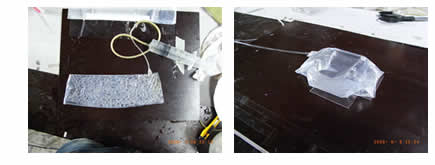 |
||||||||||
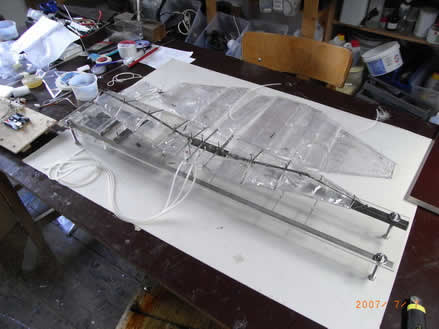 |
 |
|||||||||
| Model in tank 1/100th. |
Model in aquarium, scale 1/100th |
|||||||||
![]()
Currently working on:
Windtunnel tests at Erasmus and building my own tunnel at the workshop in Antwerp
in collaboration with VUB, Brussels
Building & running the Brussels fablab at www.fablab-brussels.be
|
|

